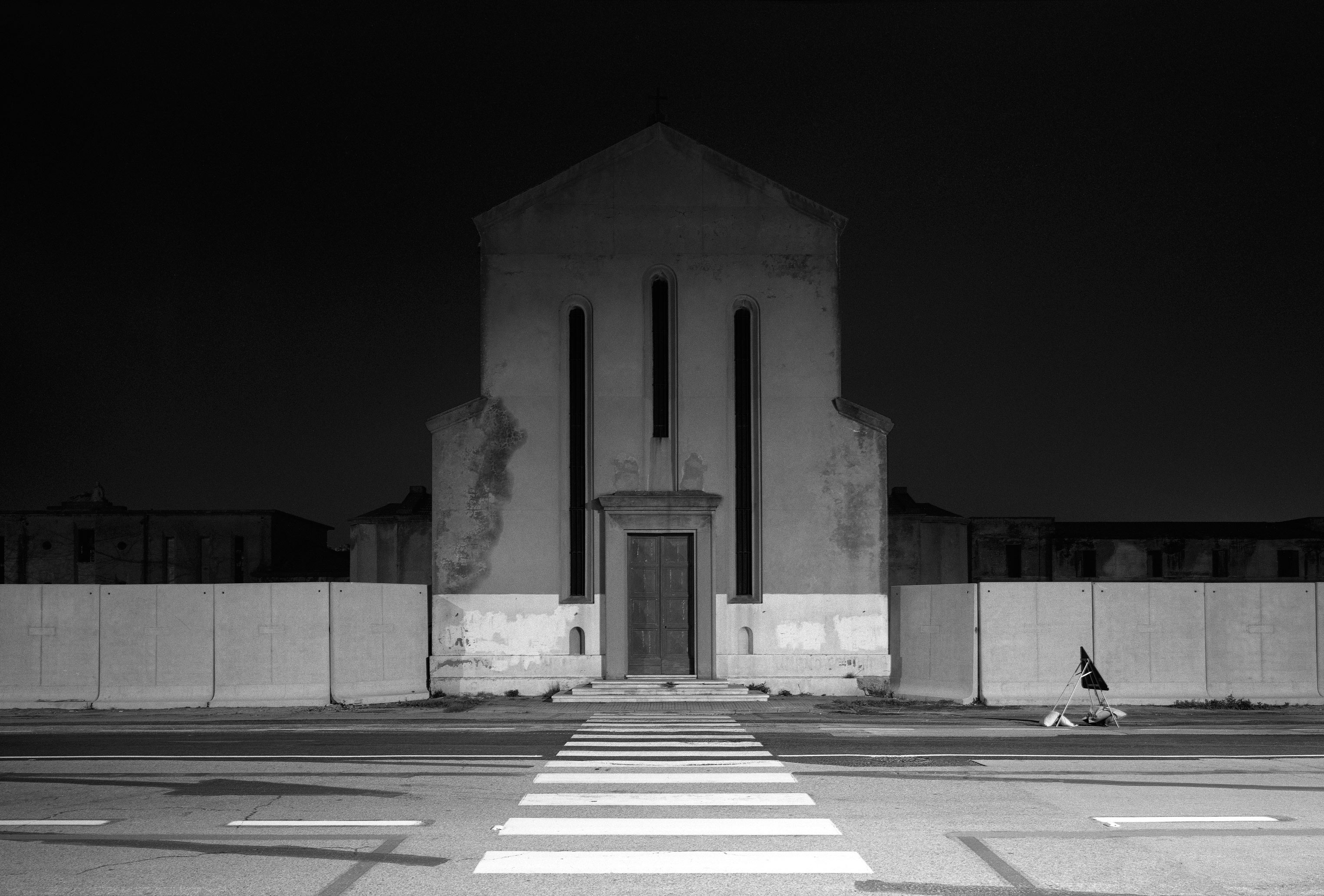
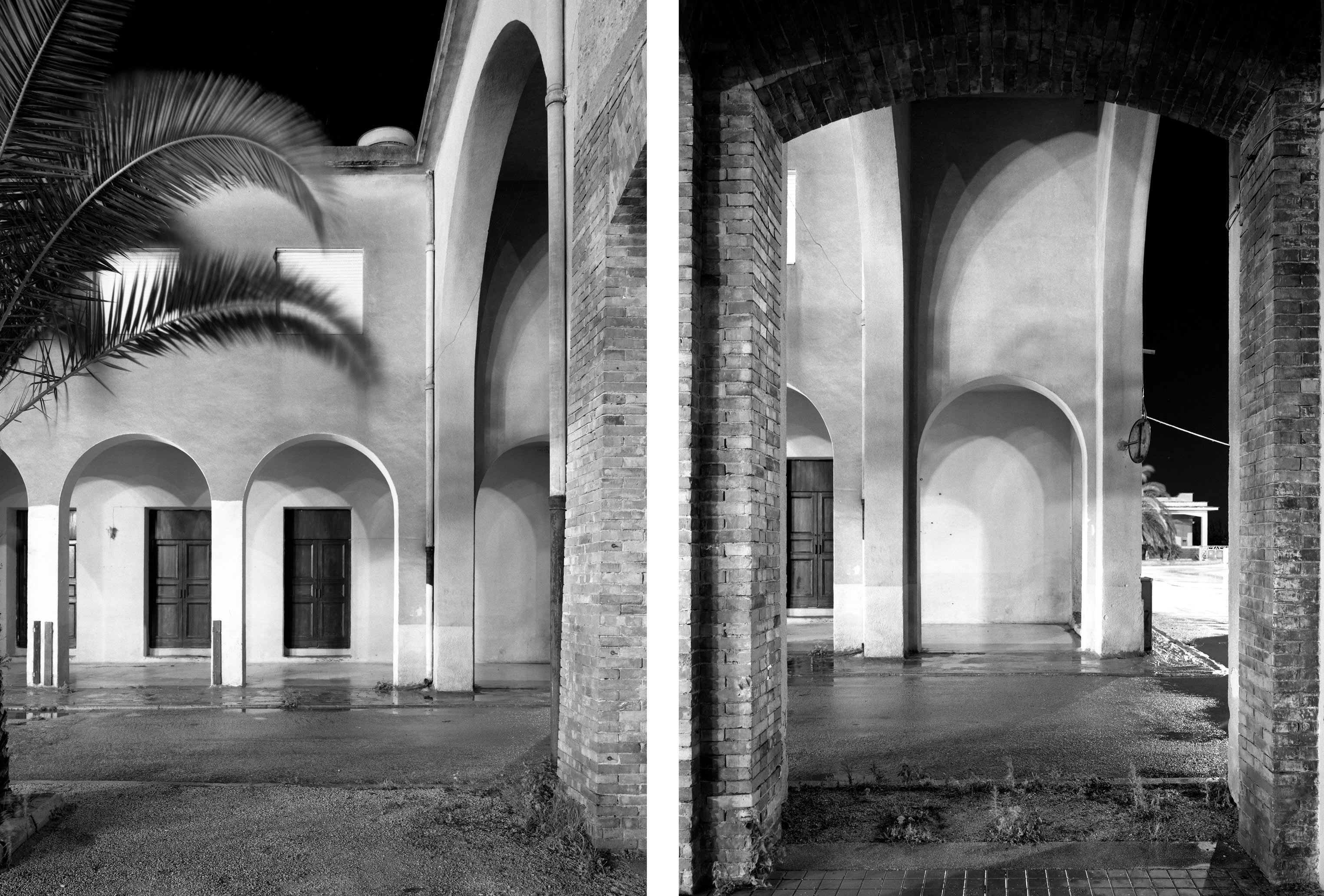

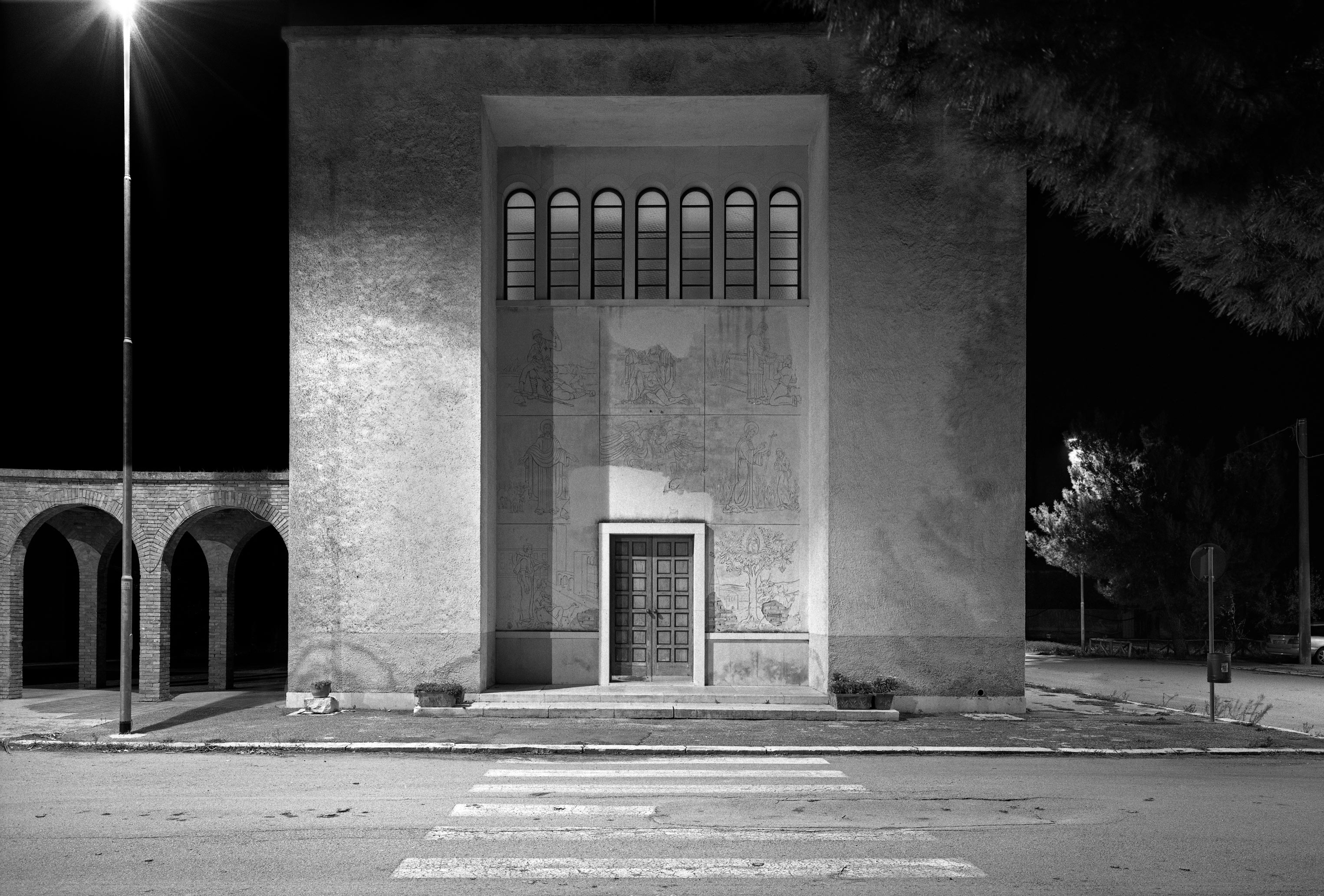




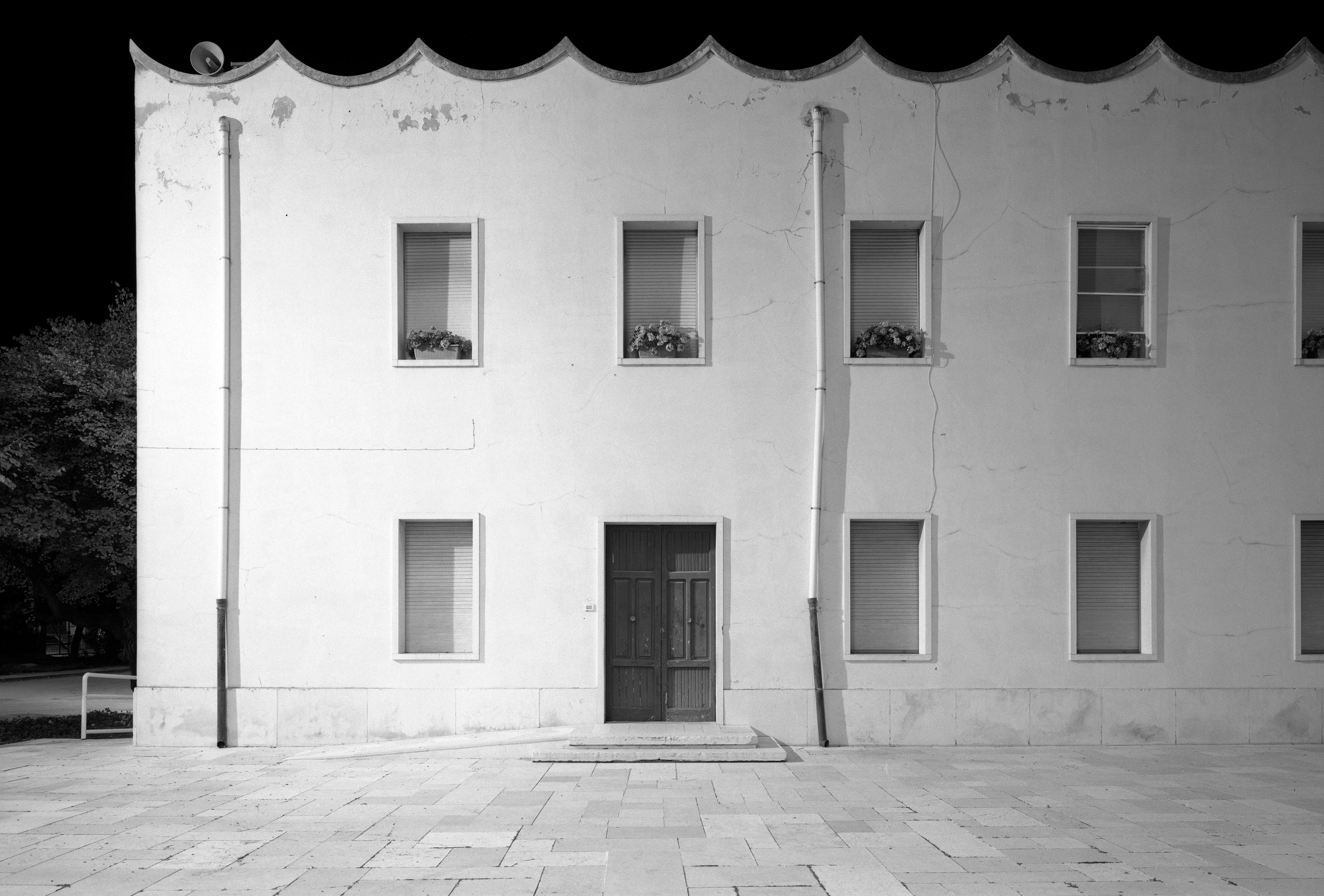
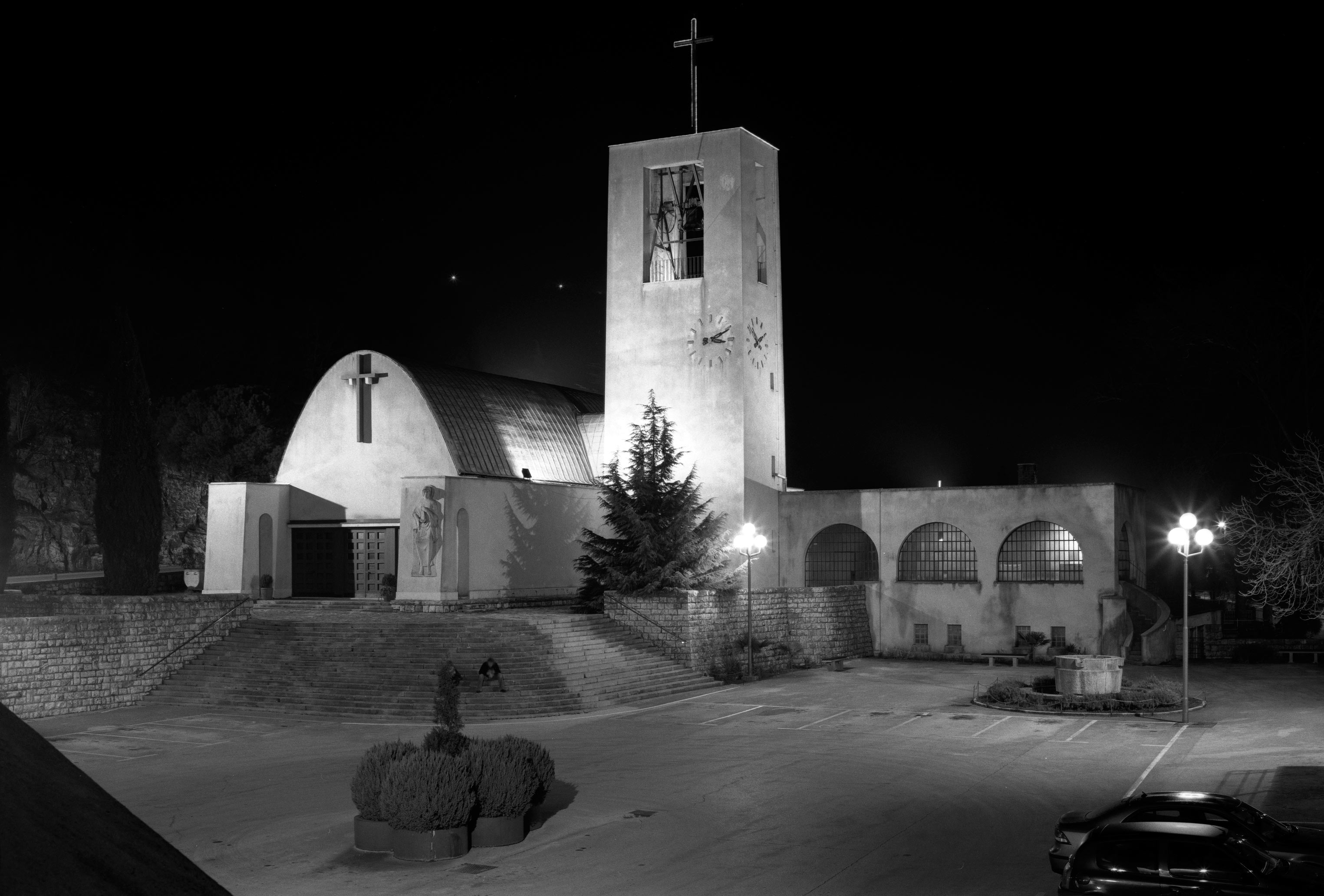






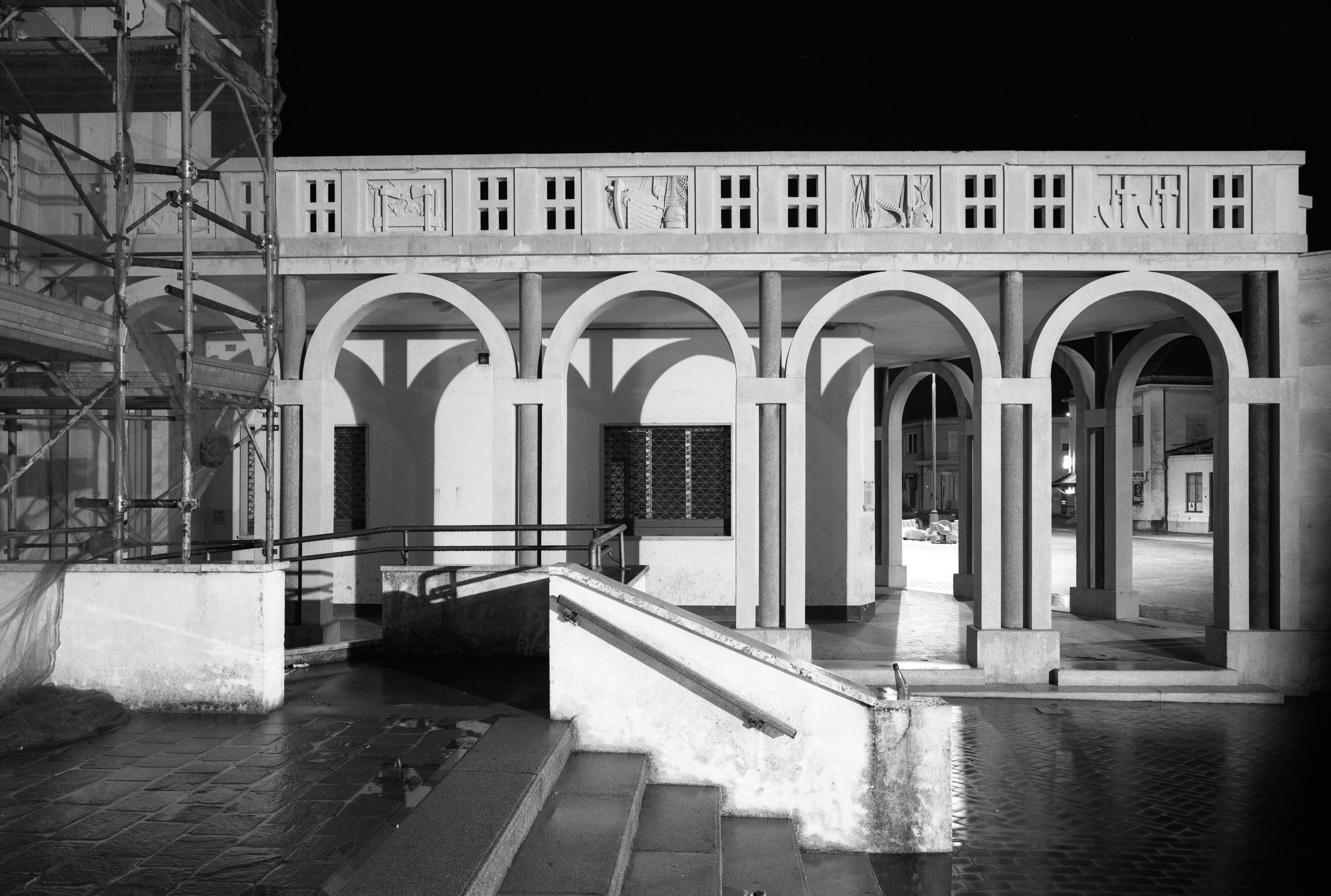

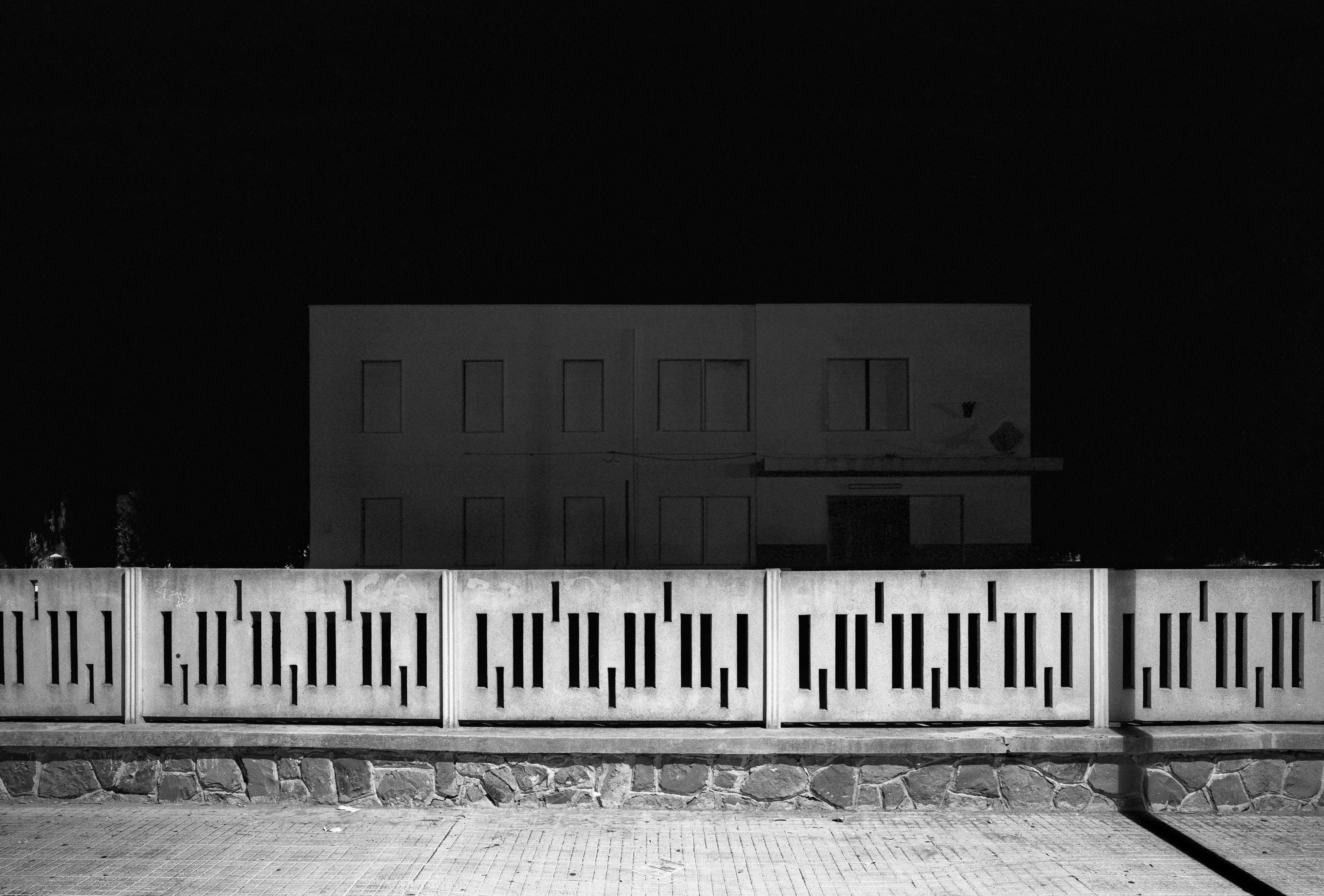

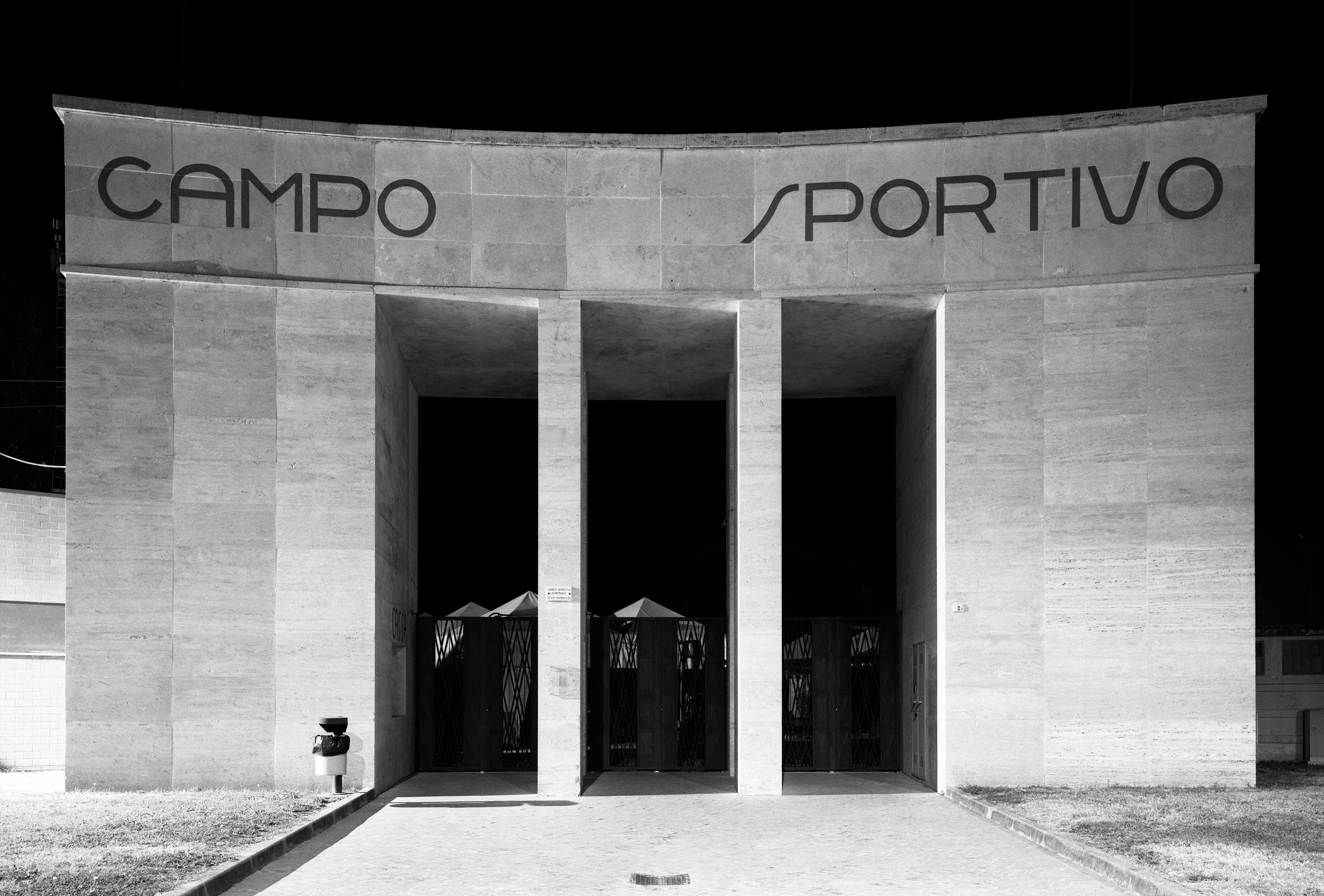





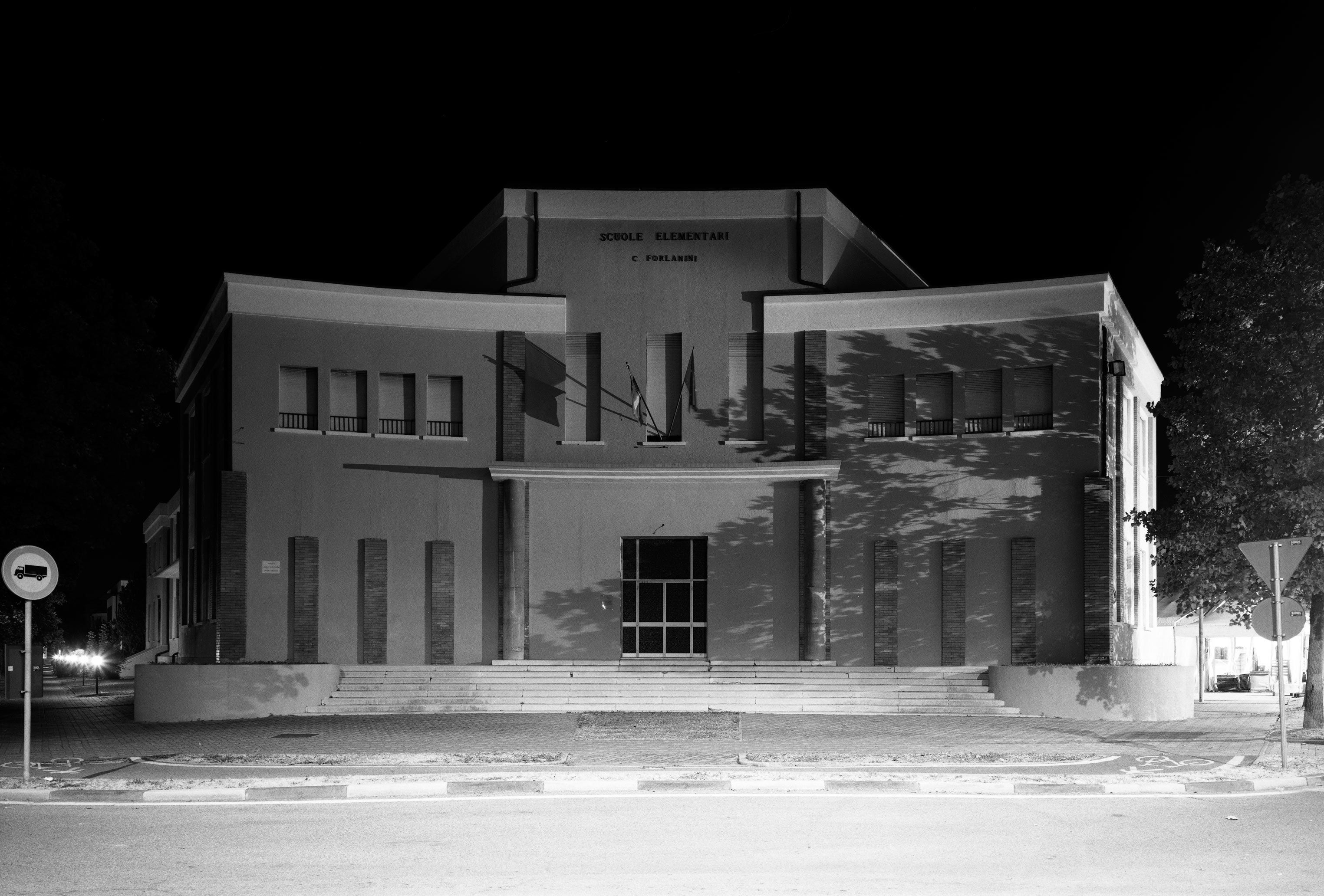





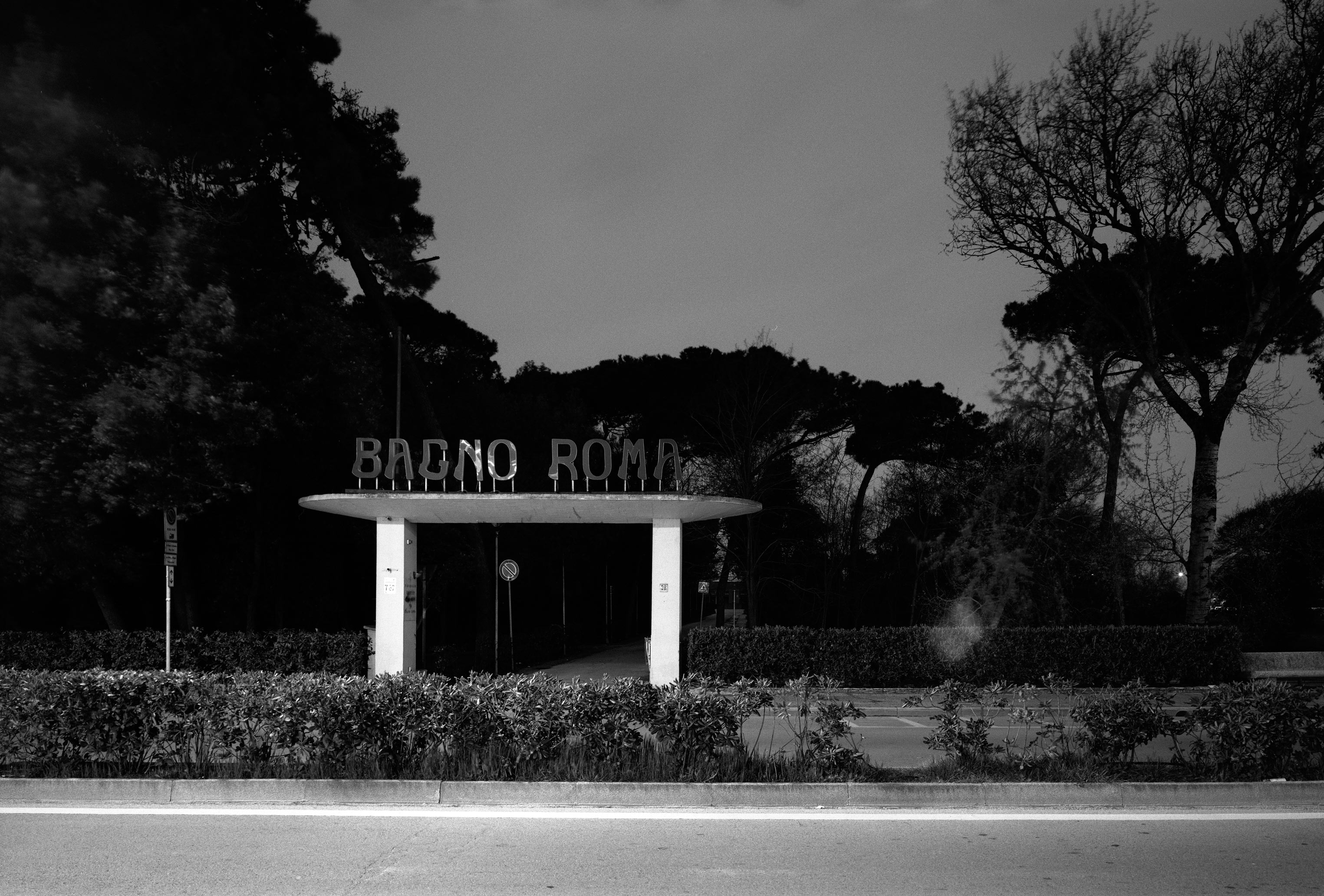




IL GESTO
Italy 1922-1944New towns in the Italy of Mussolini
↓
Sous Mussolini, plus de 150 villes nouvelles sont construites sur la péninsule italienne et ses îles, dans
le but de repeupler les campagnes, de coloniser le marais récemment asséchés et de développer les zones minières nécessaires à une économie autosuffisante.
Loin de la rhétorique monumentale des centres urbains,l’architecture de ces villages a été confiée à un groupe d’architectes talentueux, souvent d’origine juive, qui adhéraient à l’utopie d’une architecture combinant esthétique et fonctionnalité, vouée à la transmission de valeurs éthiques et communautaires.
Ce mouvement, qui s’étend des années 1920 aux années 1930, a donné naissance au mouvement RATIONALISTE italien. Cependant, l’adoption des lois raciales en 1936 et l’alliance avec l’Allemagne ont mis fin à cette expérience.
Les villes issues de ce projet ont connu des sorts variés : certaines sont tombées en ruines, tandis que d’autres sont devenues des centres prospères protégés par l’UNESCO.
le but de repeupler les campagnes, de coloniser le marais récemment asséchés et de développer les zones minières nécessaires à une économie autosuffisante.
Loin de la rhétorique monumentale des centres urbains,l’architecture de ces villages a été confiée à un groupe d’architectes talentueux, souvent d’origine juive, qui adhéraient à l’utopie d’une architecture combinant esthétique et fonctionnalité, vouée à la transmission de valeurs éthiques et communautaires.
Ce mouvement, qui s’étend des années 1920 aux années 1930, a donné naissance au mouvement RATIONALISTE italien. Cependant, l’adoption des lois raciales en 1936 et l’alliance avec l’Allemagne ont mis fin à cette expérience.
Les villes issues de ce projet ont connu des sorts variés : certaines sont tombées en ruines, tandis que d’autres sont devenues des centres prospères protégés par l’UNESCO.
Under Mussolini, more than 150 new towns were built on the Italian peninsula and its islands, with the aim of repopulating the countryside and colonising the islands.
with the aim of repopulating the countryside, colonising
and develop the mining areas needed for a self-sufficient economy.
Far from the monumental rhetoric of urban centres, the architecture of these villages was entrusted to a group of talented architects, often of Jewish origin, who embraced the utopia of an architecture combining aesthetics and functionality, dedicated to the transmission of ethical and community values.
This movement, which lasted from the 1920s to the 1930s, gave rise to the Italian RATIONALIST movement. However, the adoption of racial laws in 1936 and the alliance with Germany put an end to this experiment.
The towns that grew out of this project have had varying fates: some have fallen into ruin, while others have become prosperous centres protected by UNESCO.
with the aim of repopulating the countryside, colonising
and develop the mining areas needed for a self-sufficient economy.
Far from the monumental rhetoric of urban centres, the architecture of these villages was entrusted to a group of talented architects, often of Jewish origin, who embraced the utopia of an architecture combining aesthetics and functionality, dedicated to the transmission of ethical and community values.
This movement, which lasted from the 1920s to the 1930s, gave rise to the Italian RATIONALIST movement. However, the adoption of racial laws in 1936 and the alliance with Germany put an end to this experiment.
The towns that grew out of this project have had varying fates: some have fallen into ruin, while others have become prosperous centres protected by UNESCO.